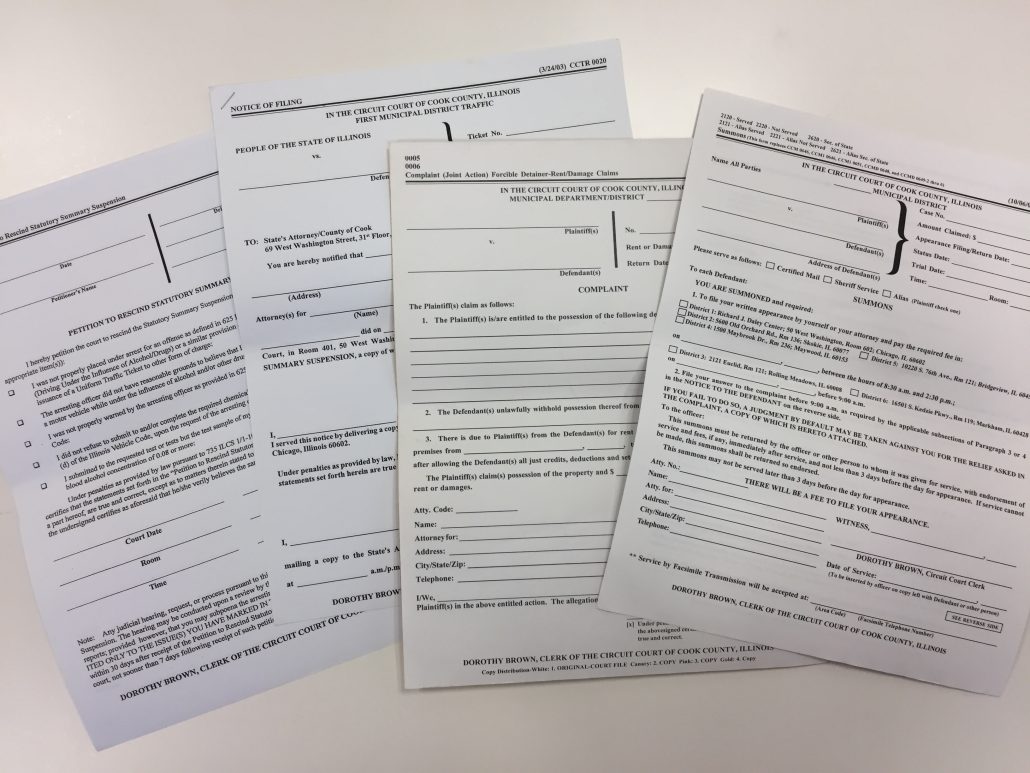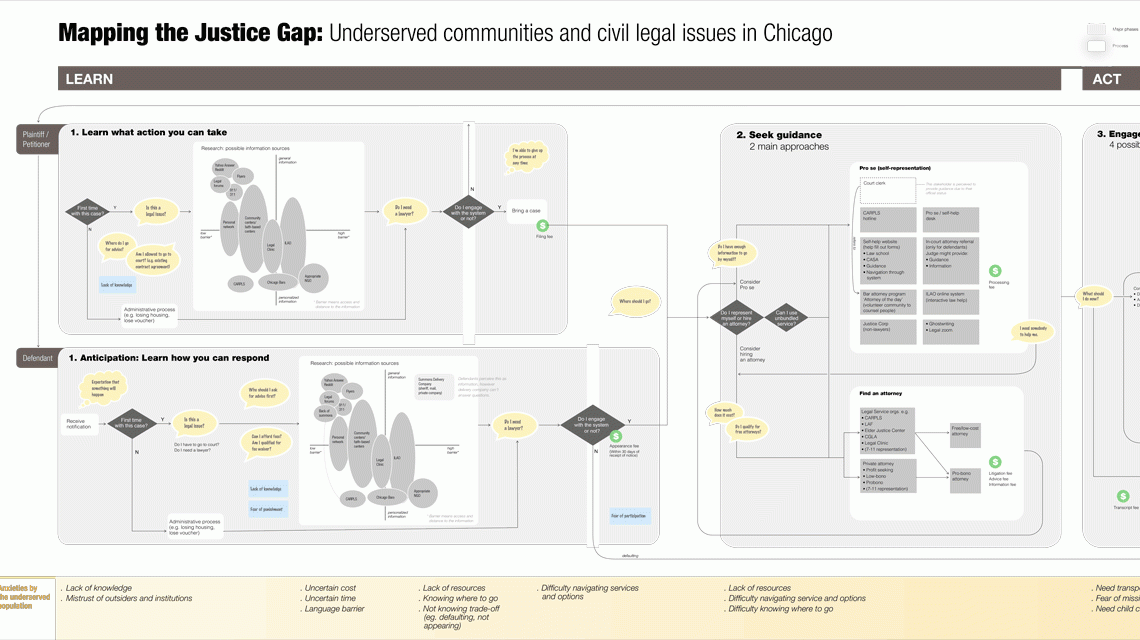
Challenge: Design a Legal Wayfinding System
The team was tasked to understand and visualize the experience of accessing the legal system from the vantage point of the underserved population. Mapping a user’s journey from this particular perspective is a step to illuminating and identifying areas of gap and design opportunities. It speaks to the ecosystem at large and the plethora of decisions one is asked to make with uncertainty at each step.
Overwhelmingly, the underserved population is not able to get the legal assistance they need, or once they do, they lack the means to follow through to gain the justice they are entitled to. The complexity of the system, the mistrust the users have towards the system, the lack (or overload) of information, their already constrained living situation and other factors contribute to this population receiving a disproportionately low amount of assistance.
Synopsis
The US legal system is not made for the everyday person, let alone for someone who is at a disadvantage, socially, economically, or educationally.
Some facts:
- Estimated 900,000 people in Cook County, IL live below the poverty line.1
- Only 300 attorneys for over 1.3 million low income Cook County residents.2
- One in five (60M) people living below the poverty in the US qualify for free civil legal aid, 50% are turned away because lack of resources. Additionally, tens of millions of moderate income Americans cannot afford legal help.3<.sup>
- Thirty pro bono and legal aid providers serve low-income people in Cook County.4
- Poverty increasing in Cook County and in Chicago; this is a suburban as well as an urban problem.5
[1 US Census, 2 Chicago Bar Foundation, 2010, 3 Dept of Justice, 2014, 4 Chicago Bar Foundation, 2012, 5 Social Impact Research Center, 2013]
This large underserved population confronts additional challenges when seeking justice with layered constraints of everyday living.
Guided by a faculty member and a non-profit attorney, three design research students spent six weeks uncovering the pathways that a user would take through the legal system. Research methods used were: secondary research, direct observation in Daley Courthouse, interviews with legal aid organizations, and a work session with legal aid professionals.
Proposed User Experience
This social innovation project focuses first on revealing the complexities of a system, with the eventual outcome of improving the users’ experience.
This version of the map is an open draft that we are sharing with the public. As the team was not made up of legal experts, there are bound to be areas of omission or ambiguity. We hope to learn from the feedback for further improvement.
For the interested parties, the map might help:
- to identify user gaps and needs
- to serve as a strategy map that points to opportunity areas for design and intervention
- to serve as a tool for alignment among stakeholders
- to foster system-level thinking by externalizing the complexity
Final Results
This is a highly general descriptive diagram of current pathways for individuals in civil cases in Chicago. Due to high variability with cases, it does not account for particular paths. Where appropriate, user concerns and voices are indicated.
While applying methods of civic design, the team grappled with issues of generality vs specificity. The goal was to seek a level that was sufficiently informative but not overwhelming, in order to keep the map useful. Many versions are required to accommodate for the many varieties of cases.
This is version 1.0 and is shared publicly using the Creative Commons Attribution/ShareAlike license. Please contact us to share feedback for improvement, as well as stories of how people are using this map and the outcome it has generated.
